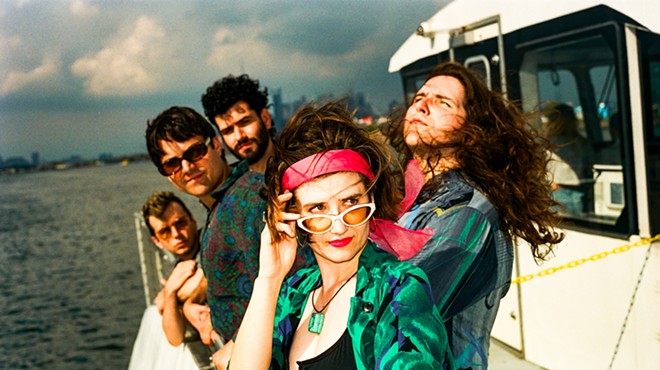Pittsburgh is dotted with the names of famous retailers, department stores whose names -- even if they exist only on fading signs -- still carry a bit of nostalgia for the city that once was. Downtown Pittsburgh still has Kaufmann's, of course, but one can find traces of other department stores as well, like Horne's, Gimbels or the Frank & Seder just across Smithfield Street. The North Side had the Boggs & Buhl department store, an artifact of the days when the neighborhood was a separate city known as Allegheny. The colorful heritage of Shadyside, meanwhile, is suggested by such exotic names as The Gap and Banana Republic.
The South Side had the Lorch family, whose enterprises once dotted the neighborhood's early business district -- even if few remember them today.
Dig back into the South Side's past and you find Lorches everywhere: A Gustav Lorch was the first pastor of the community's United Evangelical Church, a figure prominent enough to merit mention in the 1931 book Pittsburgh of Today: Its Resources and People. Lorch's son Albert was a "florist of note," the book says, in what I can only assume is not some sort of code language.
Figuratively and literally, in fact, it was in retailing that the Lorch name loomed largest, thanks to the four-story building you mention, which was built for the George E. Lorch and Brother department store in the mid-1890s. (The "Brother" was Louis Lorch, Junior, who must have worked out his sibling rivalry issues early in life.) Up until the construction of the South Side Works, it was one of the largest retail spaces built along Carson Street.
The Lorch family seems to have gone largely unsung in Pittsburgh retailing history. They didn't hire world-class architects to build summer homes, the way the Kaufmanns did when they built Frank Lloyd Wright's Fallingwater. They didn't commission public amenities like the North Side's Buhl Planetarium. The Lorch clan didn't even have any print ads I could turn up. (Remember folks, every newspaper ad is a little piece of immortality. You can't put a price on that kind of posterity -- though our sales staff is standing by to quote you a figure.) But it is possible to put together a partial history of the family fortunes from city directory listings and other documentary information.
What those records show is that in the early 20th century, the Lorches were the Medicis of the 1600-1700 blocks of East Carson. By the time they moved into their new digs, a Lorch Pharmacy was in operation just up the street, and in the following years George Lorch began selling carpet at 1701 East Carson, just across South 17th Street from his department store. (He rented apartments on the floors above.)
But the Lorch mercantile empire began falling apart during the Great Depression. By 1931, city directories listed Lorch only as a "salesman," and he died not long after. The store fell vacant and few Pittsburghers today remember it, even though it outlived the Downtown Lazarus by a wide margin.
But Lazarus and Lorch's may end up sharing some things in common: In later years, the Lorch site housed a dollar store. That in turn gave way to Gil's, a pharmacy that was eventually replaced by Rite Aid. Somewhere during these renovations, the snipped-off corner of the structure acquired a glass-block façade which made the whole thing look like a cross between a movie theater and an Army installation. These latter tenants, though, only occupied the first floor; according to a 2003 Pittsburgh Business Times story, the upper floors were occupied by a duck-pin bowling alley.
Personally, I think duck-pin bowling could be ready to stage a major comeback: It could be the next retro craze for Gen X-ers who blew out their rotator cuffs while swing dancing. But to developers, a duck-pin bowling alley means only one thing: large, open floor plates. The structure was renovated last year, with a new Japanese restaurant on the ground floor and hopes of attracting new business to the floors above. Those companies may not last as long as Lorch, but with luck they'll be in town longer than Lord & Taylor.










